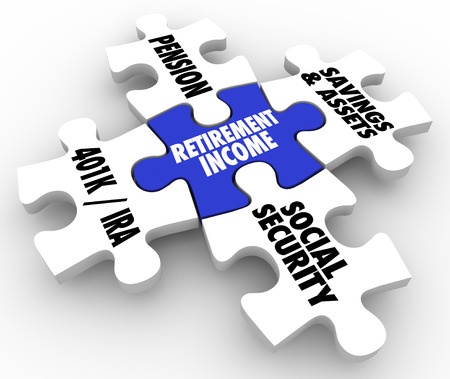
Traditionally retirement income has been thought of as a three legged stool where income consisted primarily of Social Security, Pension income, and withdrawals from personal savings.
This picture has changed dramatically over the past 50 years as most employers have shifted away from Defined Benefit plans into Defined Contribution plans like the all familiar 401k most of us have today. Compound a phase out of traditional pension plans with longer life expectancies, higher health care costs, and later FRAs (full retirement ages) for Social Security, and the importance of personal savings has become paramount. Let’s take a closer look at these three income streams to explore how they impact retirement today.
Pension
If your employer still provides a pension, chances are you have a few options when claiming your benefit. These usually include a lump sum or an annuity payment as well as survivor benefits for your spouse. The choices you make here can have a significant impact on your lifetime income stream. You will want to consider the annuity payout rate, the rate of return you might expect on the lump sum if it is rolled over to an IRA and invested, and your health and life expectancy as well as those of your spouse. While the spousal benefit sounds like a no brainer, if you are in good health it may be cheaper to hold a life insurance policy for the present value of the annuity and claim the straight life option. If you worked for your employer for most of your career there may be additional benefits to take advantage of when claiming your pension. A thorough analysis of the choices is warranted before making a final decision.
Social Security
We have written extensively about the ever changing landscape of Social Security. From determining what age to claim to claiming strategies for spouses to the unique taxation of benefits there is a lot to consider. Every year you delay claiming benefits after full retirement age until age 70 provides an additional 8% in benefits. This is likely a higher rate of return than you can expect on your investment portfolio, especially in today’s low return environment. Deciding when to take social security should also be incorporated with your overall long term plan, not only to maximize your lifetime benefit, but to give you the highest odds of outliving your assets.
Personal Savings
This brings us to the third, and arguably most important, leg of the stool: personal savings. Hopefully you have been saving diligently in your 401k, IRA, and other accounts throughout your earning years. But what is the best way to turn these savings into a retirement income stream? The inclination for many might be to try to live entirely off of pension and social security income, pulling from retirement assets only sparingly or taking just your Required Minimum Distribution every year. This sounds attractive, but may have you living an overly austere lifestyle simply to leave a growing estate. Another frequent desire we hear is to “live off the income, not touch the principal.” This also sounds nice, but becomes very difficult to implement and can cause bumpy income distribution, especially with current low interest rates.
The goal with personal savings withdrawals in retirement should be a smooth income that supports your standard of living, while also minimizing tax payments and helping your portfolio last as long as possible. So how do we achieve this? Through careful analysis of your current resources, standard of living, long term goals, capacity for risk as well appropriate tax planning and investment management. While transitioning into retirement may mean dialing down your portfolio’s risk, it shouldn’t mean abandoning risk completely. Retirement doesn’t mean that you are “out of time.” It simply means that your needs are changing.
Every retirement plan is unique. Yours may include an expected inheritance, annual gifts, income from a trust or rental property, part time work, or the proceeds from the sale of a small business. If you have questions about how to transition from your working years to retirement, please contact us to discuss the best strategy for you.
Copyright: iqoncept / 123RF Stock Photo

